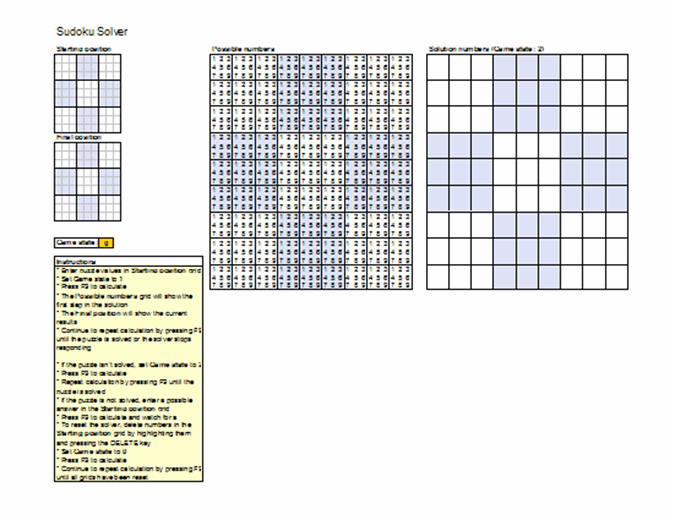

A Sudoku designed to work against the brute force algorithm. Each cell is tested for a valid number, moving "back" when there is a violation, and moving forward again until the puzzle is solved. Mathematical and Computational Algorithms Backtracking A Sudoku (top) being solved by backtracking. Although some niche communities also exist around trying to find the hardest possible puzzles. In general, puzzle makers aim to strike a balance between challenging the player while maintaining the puzzle fun to solve.
SUDOKU PUZZLE SOLVER FREE TRIAL
Most published sudoku puzzles of varying difficulties are purposefully constructed to be solvable by a human with pencil and paper techniques, even though it is easier computationally to construct a puzzle without checking if it requires trial and error to solve. There are several computer algorithms that will solve 9×9 puzzles ( n=9) in fractions of a second, but combinatorial explosion occurs as n increases, creating limits to the properties of Sudokus that can be constructed, analyzed, and solved as n increases.

Players and investigators use a wide range of techniques to solve Sudokus, study their properties, and make new puzzles, including finding ones with interesting symmetries or other properties. Proper Sudokus have only one unique solution. A Sudoku starts with some cells containing numbers ( clues), and the goal is to solve the remaining cells. Each cell may contain a number from 1 to 9, and each number can only occur once in each row, column, and box.

Algorithms to complete a sudoku A typical Sudoku puzzleĪ standard Sudoku puzzle contains 81 cells in a 9×9 grid, further subdivided into 9 separate boxes of 3×3 cells each.


 0 kommentar(er)
0 kommentar(er)
